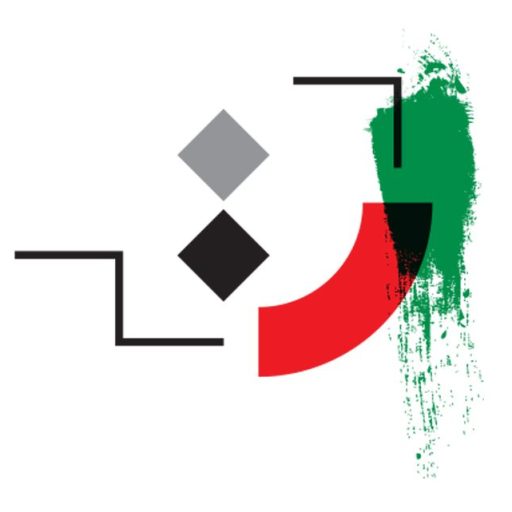Farhad Saba
Biography
Farhad Saba, born on February 8, 1947, in Shemiran, Tehran, is a distinguished Iranian cinematographer known for his significant contributions to Iranian cinema, particularly through collaborations with renowned directors such as Abbas Kiarostami, Naser Taghvai, and Kiumars Pourahmad. Beyond cinematography, Saba has also worked as a director and screenwriter and has served as a jury member in prominent Iranian film festivals.
Life and Education
Farhad Saba was born in Shemiran, Tehran. After completing his primary education, he pursued a one-year general cinema course followed by a specialized cinematography program. These training experiences laid a strong foundation for his professional career, establishing him as one of Iran’s leading cinematographers.
Cinematic Career
Saba began his professional career as a director of photography, working on numerous films over more than four decades. His collaborations with acclaimed directors have resulted in some of the most iconic visuals in Iranian cinema. Notable works include Where Is the Friend’s House? (1987) directed by Abbas Kiarostami and Journey to Chazzabeh (1995) directed by Rasoul Mollagholipour. His cinematographic style, often characterized by natural lighting and minimalist yet impactful compositions, has enriched the emotional and narrative depth of the films he worked on.
In addition to cinematography, Saba directed the film Foreign Doll (2005), where he also served as a screenplay consultant. He co-wrote the screenplay for Rain (1982) with Kiumars Pourahmad. Beyond his primary roles, Saba has been an active jury member for prestigious Iranian film festivals, including the Young Cinema Festival, Fajr Film Festival, and Iran’s Simaye Iran Festival, contributing to the evaluation and promotion of emerging filmmakers.
Filmography (Director of Photography)
Farhad Saba has served as the director of photography for numerous films, some of the most notable include:
- African Violet (2018)
- Sometimes Real (2006)
- 50 Million Offer (2005)
- Pink Marriage (2004)
- Candle in the Wind (2003)
- Sons of the Moon (Soldier in the Dark) (2002)
- Leaden Stars (2002)
- Look at the Sky Sometimes (2002)
- Unruled Paper (2001)
- An Umbrella for Two (2000)
- Thousands of Women Like Me (2000)
- The Joke (1999)
- Sanam (1999)
- Glass Love (1999)
- The Legend of Poopak the Golden (1998)
- Willow and Wind (1998)
- The Sack of Rice (1996)
- Journey to Chazzabeh (1995)
- Tick Tock (1992)
- Boots (1992)
- Once and Forever (1992)
- The Singing Cat (1990)
- Journey of Love (1988)
- Anchorage (1988)
- Land of Dreams (1987)
- Where Is the Friend’s House? (1987)
- The Relationship (1986)
- Bibi Chelcheleh (1984)
Directing and Screenwriting
- Directing: Foreign Doll (2005, also screenplay consultant)
- Screenwriting: Rain (1982, co-written with Kiumars Pourahmad)
Awards and Nominations
Farhad Saba has been recognized for his cinematography at several prestigious film festivals in Iran. His notable awards and nominations include:
- Nominated for Best Cinematography for Where Is the Friend’s House?, 5th Fajr Film Festival (1987)
- Nominated for Best Cinematography for Tick Tock, 12th Fajr Film Festival (1993)
- Nominated for Best Cinematography for Journey to Chazzabeh, 14th Fajr Film Festival (1995)
- Winner of Honorary Diploma and Crystal Plaque for Best Cinematography for Journey to Chazzabeh, 6th Sacred Defense Film Festival (1996)
- Nominated for Best Cinematography for The Saved (Najat-Yaftegan), 2nd House of Cinema Awards (1998)
- Nominated for Best Cinematography for Willow and Wind, 4th House of Cinema Awards (2000)
- Nominated for Best Cinematography for Unruled Paper, 6th House of Cinema Awards (2002)
- Nominated for Best Cinematography for Leaden Stars, 6th House of Cinema Awards (2002)
Video Index
Chapters:
- Life and Education
- Post-Education and Start of Professional Career
- The 1979 Revolution
- Marriage
- Migration
- Collaboration with Abbas Kiarostami
- Collaboration with Nasser Taghvai
- Collaboration with Kiumars Pourahmad
- Collaboration with Mohammad Ali Talebi
- Collaboration with Rasoul Mollagholipour
- Collaboration with Pouran Derakhshandeh
- Other Works
- Directing
- Cinema
– Imagination and Creativity
– Style in Cinematography
– Digital Cinema
– Social Media
– Cinematography in Service of the Subject
– Modernism and National Identity
– Social Responsibility of the Artist
– The Artist’s Perspective
– Who is an Artist?
– Modern Arts (Video Art, etc.)
– The State of Producing in Iranian Cinema
– Characteristics and Differences of Iranian Filmmakers Before and After the 1979 Revolution
– The Future Outlook of Iranian Cinema
- Work Experiences and Methods
– Do You Have Any Regrets About Your Cinematography Work?
– Future Plans
– Greatest Challenge
– Sense of Responsibility
– Best Period of Your Career
– How Do You Balance Cinema and Personal Life?
– Interaction with Actors
– Interaction with Other Crew Members
– Interaction with Directors
– Advice to the Younger Generation
– What Challenges Did You Face at the Start of Your Professional Career?
– Other Activities
– The Mission of a Cinematographer
– What Has Cinema Given You, and What Have You Given to Cinema?
– Children’s Cinema
– How Has Artistic Activity Influenced Your Lifestyle?
– Cinematography: From Idea to Execution
– Screenwriting
– The Concept of Cinematography
– Criteria for Collaborating on a Project
– Censorship
– Most Significant Work
– What Does Showcasing Your Work Teach You?
– Which Filmmakers Did You Enjoy Collaborating with the Most?
– Realism in Film
- Audience Impact on Works
– The Role of the Audience
– The Role of Criticism
– Negative Criticism and How to Handle It
- Personal Worldview
– Which Artist Has Influenced You the Most?
– A Description of Yourself and Your Greatest Wish
– The World of Reality and Imagination
– Relationship with Other Arts
– Personal Evolution Journey
– Contemplation of Death
Personal Information
- Birthday: February 8, 1947
- Birthplace: Shemiran, Tehran, Iran
- Interview date: 20.01.2018- 22.01.2018
Cinematographer
